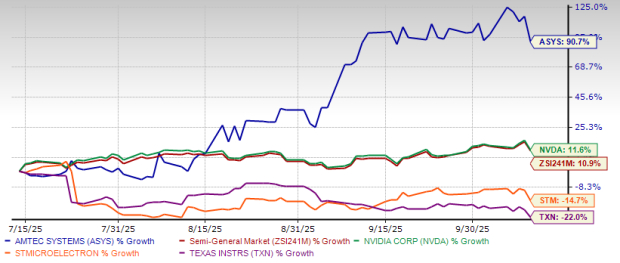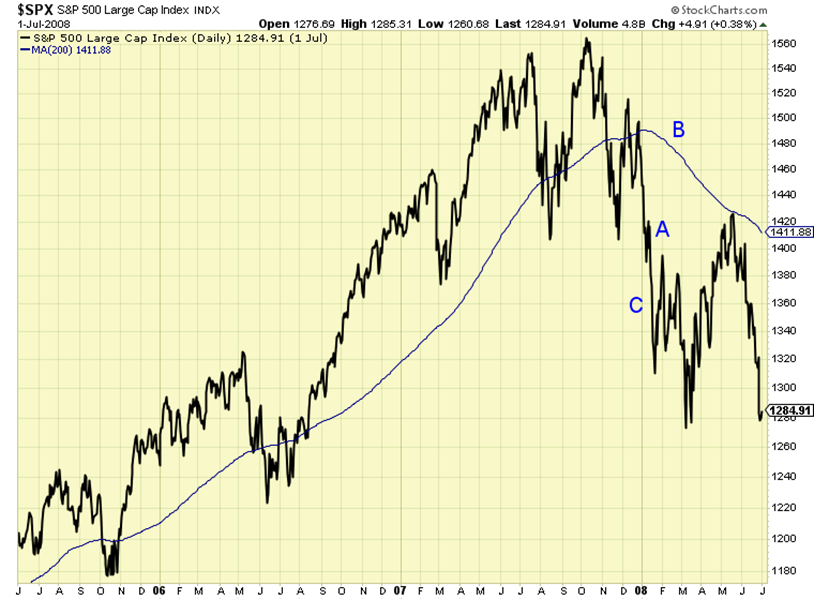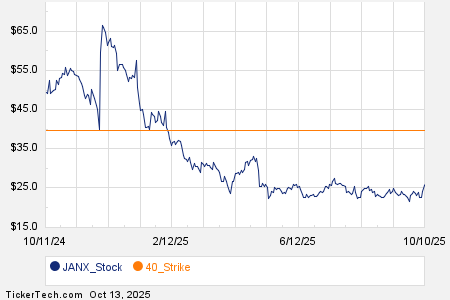
Exploring the Journey
Now, let’s delve into the journey of my investment in VICI Properties Inc. (NYSE:VICI). Much like the recent Starbucks (SBUX) analysis, it’s time to review my two-year tenure with VICI to gain a comprehensive perspective.
Over the past six months, VICI has received substantial attention on Seeking Alpha with 30 published articles. Fellow analysts have displayed a bullish sentiment towards VICI, as evidence by only 2 “Hold” ratings against 18 “Buy” or “Strong Buy” ratings from the last 20 articles.
VICI holds a unique position in my portfolio as the sole Real Estate Investment Trust (REIT), and this analysis will chart an unconventional course by starting with an overview of my investment history with VICI, followed by a valuation assessment and a final touch on the associated risks.
Making the Move
Purchased on November 30, 2021, at approximately $27 per share, VICI currently represents around 2.5% of my portfolio. For the uninitiated, VICI is a REIT with a diverse portfolio encompassing gaming, hospitality, and entertainment destinations, primarily concentrated in the casino segment.
At the time of my initial investment, VICI exhibited a robust track record of collecting 100% of rents during the pandemic, reflecting financial stability. The company’s AFFO for the trailing twelve months stood at $1.02 billion with an AFFO per share of $1.62. Despite this, the dilutive effect of newly issued shares initially clouded VICI’s actual value.
However, foreseeing the closure of lucrative deals and considering the annual rent escalators embedded within the lease terms, I viewed VICI as an undervalued, defensively positioned investment with built-in growth prospects, making it an attractive choice in the face of heightened inflation.
The Unfolding
Subsequently, VICI reported an AFFO of $1.93 per share in FY22, aligning with the lower end of my anticipated range, and currently stands at $2.07 AFFO per share for the TTM, in line with my original estimations.
Moreover, VICI has outperformed the broader market since my investment, marking a successful trajectory. With dividend hikes and a current dividend yield sitting at 6.1%, the investment has proven fruitful.
While this paints a positive picture, it begs the question of whether to retain VICI for the long term, prompting a closer examination of its performance.
Critical Evaluation
When I initially invested, VICI traded at approximately 7.2% forward AFFO yield, projecting a potential return below 10% in the future, necessitating accretive property acquisitions to outperform the market. However, recent investment endeavors, aside from the MGM Grand /Mandalay Bay JV deal, make up a meagre 4% of VICI’s portfolio, likely insufficient to significantly impact its position.
Furthermore, VICI’s foray into non-casino ventures, such as the Bowlero deal and the Cabot partnership, calls into question its ability to identify accretive acquisition targets in the casino space, raising concerns about the company’s strategic direction and growth potential.
Assessing VICI Properties Inc: A Deep Dive Into Valuation Approaches
VICI Properties Inc, one of the leading real estate investment trusts (REITs), has been the subject of intense scrutiny by investors and analysts alike. Valuing a REIT, however, presents a unique set of challenges which is why it’s worth exploring two distinctive valuation approaches: (1) Net Asset Value (NAV) and (2) a traditional valuation approach using future growth estimates and payouts. Let’s dissect each methodology separately to gain a comprehensive understanding of VICI’s valuation.
NAV Approach: Unveiling the Real Estate Portfolio’s Value
Valuing VICI’s real estate portfolio is no walk in the park – it’s akin to peeling an onion, the more layers you go through, the more complex it gets. Nonetheless, the market currently values VICI’s real estate portfolio at approximately $49.3 billion. When we delve deeper, it becomes apparent that by purchasing a share of VICI today, investors are essentially paying a 6.18% Cap Rate for the real estate portfolio. However, the question remains – is this a fair price? To answer that, let’s compare it to some significant transactions, particularly in Las Vegas, where VICI has been particularly active. For instance, VICI’s acquisition of the Venetian and the MGM Growth Properties deal were both transacted at cap rates of 6.25% and 5.87% respectively. Although these figures seem to justify VICI’s current valuation, it’s essential to consider the reputation of the counterparty involved. Notably, when Blackstone is the selling party in transactions – as was the case with VICI’s purchases – it can raise concerns. Furthermore, VICI’s portfolio extends beyond Las Vegas, and the cap rates for their non-Vegas acquisitions are notably higher, potentially rendering VICI overvalued from the NAV standpoint.
The “Traditional” Approach: Crunching the Numbers
Shifting the focus to a more traditional valuation approach, we begin with VICI’s annualized Adjusted Funds from Operations (AFFO), which stands at $547.6 million for Q3 23. With the market cap at $32.5 billion, the AFFO yield currently sits at 6.75%. Assuming a payout ratio of 100%, this implies VICI could potentially pay out 6.75% of an investment per year. As for the growth rate, it encompasses AFFO growth through rent escalators and additional AFFO growth through accretive property acquisition. However, a critical factor to consider here is the Consumer Price Index (CPI). Elevated inflation could significantly impact this growth.
VICI Properties: A Cautionary Tale of Growth and Profitability
The Numbers Game
VICI Properties, the real estate investment trust (REIT) known for its ownership of casino properties, has been a topic of fervent debate among investors. The discussion revolves around its ability to maintain growth while delivering handsome returns. The numbers, however, paint a complex picture that requires careful scrutiny.
Considering an adjusted funds from operations (AFFO) yield of 6.75%, augmented by an estimated 2.5% AFFO growth through rent increases, the potential return stands at an alluring 9.25%. This compelling figure positions VICI as a “sleep-well-at-night” (SWAN) investment for dividend-focused investors. However, for those seeking to beat the market, the path to success might demand a quest for more growth.
Evaluating Growth Through Acquisitions
VICI’s pursuit of additional growth through acquisitions necessitates a comprehensive examination of its cost of capital. Assuming a financing model of 40% debt and 60% equity, the company’s cost of equity, reflecting the dilutive effect of new share issuance for existing shareholders, stands at 6.75%. On the other hand, a bullish estimate proposes a cost of debt at 5%. Combined, these metrics yield a cost of capital at 6.05%.
In this context, the determination of cap rates for potential acquisitions is pivotal. While recent casino acquisitions transpired at rates exceeding 7.5%, a more conservative assumption pegs it at 7%. The resultant “Investment Spread,” representing accretive AFFO per invested dollar, sheds light on the imperative for value-generating transactions. For instance, an investment of $1 billion should yield a $9.5 million improvement in accretive AFFO, after considering dilution from share issuance and added interest expenses.
The Quest for Market-Beating Returns
To achieve a target of 11% returns, an essential element emerges – growth. A calculated analysis suggests that a 1.75% growth off an annualized AFFO of $2.19 billion necessitates an addition of $38.4 million in AFFO. Given the Investment Spread of 0.95%, VICI would require a $4 billion annual portfolio expansion, constituting a 10% increase, to fulfill these aspirations.
While VICI has explored diversification into areas with higher cap rates such as bowling and golfing, the limited impact of these ventures raises questions about the company’s overarching strategy. Moreover, concerns arise regarding the company’s valuation, with indications pointing to a need for a lower price per share.
Weighing Options
In view of these deliberations, the decision-making process for investors becomes pivotal. While VICI might present an alluring prospect for retired dividend investors owing to its stable business model and inflation-resilient attributes, those seeking market-beating returns find themselves at an impasse. The crucial choice between holding and selling VICI shares underscores the dilemma faced by investors with varying investment objectives.
The tantalizing prospects of potential tailwinds – such as the REIT sector’s potential outperformance and the persistence of heightened inflation favoring VICI – evoke a cautious sentiment, leading to the decision to retain holdings for the foreseeable future. Amidst this uncertainty, the eyes of investors remain fixated on the broader market trends, awaiting the optimal opportunity to review their positions.
In Conclusion
The assessment of VICI Properties yields a multifaceted narrative, intertwining growth potential and valuation intricacies. The inherent dynamics of a REIT operating in the realm of casino properties, along with its strategic forays into diverse real estate segments, present a compelling case for investors to tread cautiously.
Amidst this nuanced landscape, the virtues of stable dividend income and the allure of market-beating returns play an enigmatic tug-of-war. As the investment community grapples with these conundrums, the fate of VICI remains perched on the fulcrum of prudence, patience, and the capricious winds of market trends.






